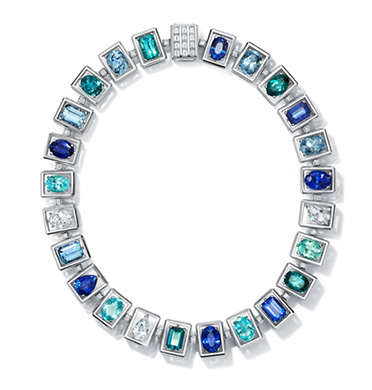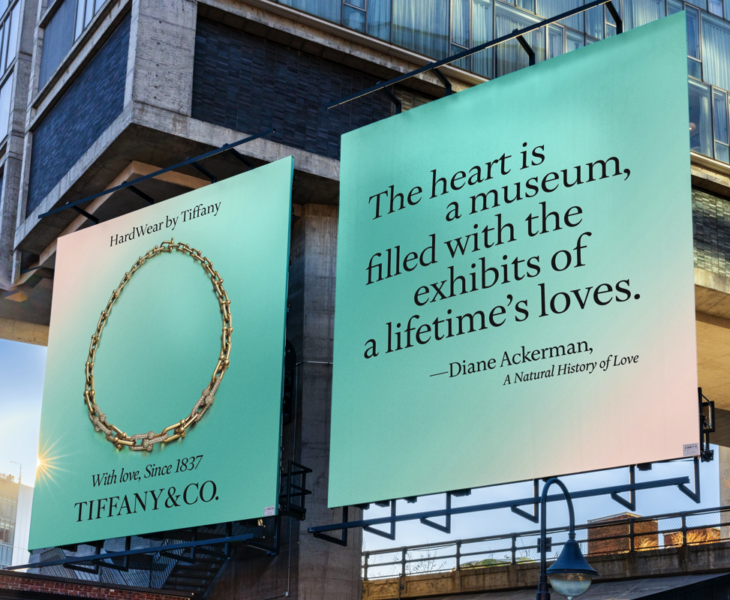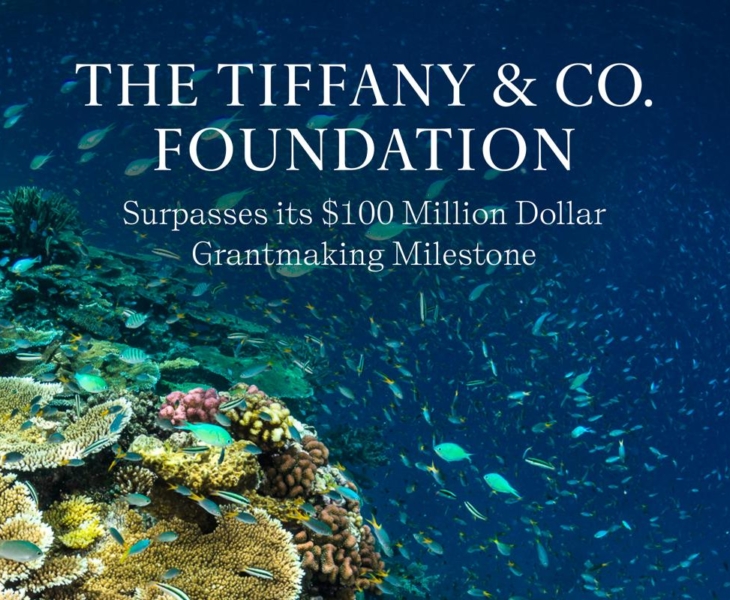
Tiffany has a longstanding legacy as a purveyor of the world’s most exceptional and rare colored gemstones, introducing gemstones that had never been used in jewelry until Tiffany popularized them. While many jewelers showcase rubies, emeralds and sapphires, Tiffany is proud to include a wide range of colored gemstones in its designs, encompassing the full spectrum of color.
Colored gemstones have been integral to establishing Tiffany’s reputation as a world-renowned jeweler. Prior to the mid-19th century, colored gemstones were rarely used in American jewelry. This all changed in 1876, when a young gemologist, Dr. George Frederick Kunz (1856–1932), sold an exceptional tourmaline to founder Charles Lewis Tiffany (1812–1902). Soon after, Dr. Kunz joined the company and embarked on a lifelong quest for the most extraordinary gemstones for Tiffany’s clientele.
The treasures introduced by this intrepid globetrotter constituted the world’s greatest collection of gemstones, including exotic yellow beryl from Sri Lanka (Ceylon), green demantoid garnets from Russia’s Ural Mountains and ocean-blue aquamarines from Brazil. Kunz was equally passionate about American gemstones, adding Montana sapphires, Maine tourmalines, and garnets and topazes from Utah to Tiffany’s burgeoning vault. In 1902, a lilac pink stone that had been found in California was delivered to Kunz. The stone was a variety of spodumene, a newly discovered gemstone. A fellow gemologist named the stone “kunzite” after the man who made beautiful gemstones his lifelong passion. This stone is the first of several Tiffany legacy gemstones that the luxury house proudly introduced to the world.
In 1910, Tiffany acquired and introduced a pink beryl that was discovered in Madagascar, naming it “morganite” after financier John Pierpont Morgan. Morgan, a leading figure of America’s Gilded Age, was a major collector of colored gemstones and a devoted Tiffany client. He worked with Dr. Kunz, who personally acquired for Morgan some of the world’s finest gemstones at the time—exquisite gems that were later donated to the American Museum of Natural History. Today, the museum’s Morgan Memorial Hall of Gems pays homage Morgan’s gemological affinity.
With the introduction of morganite and other vibrant gemstones, Tiffany designers created boldly saturated jewels that captivated the world. G. Paulding Farnham (1859–1927), Tiffany & Co. Chief Jewelry Designer from 1891 to 1908, personally designed many of them, including a nine-inch iris brooch set with Montana sapphires, green garnets and diamonds. Louis Comfort Tiffany (1848–1933), son of Charles Tiffany and a leader of the Art Nouveau movement, captured the key themes of his famous stained glass—vividly colored fruits, wildflowers, birds and insects—in jewels with Mexican fire opals, green and red garnets, and amethysts.
These gifted designers’ creations were featured in Tiffany’s grand prize-winning exhibitions at the great world’s fairs in the late-19th and early-20th centuries. With motifs from Orientalist to Native American, and later, the exuberant 1930s cocktail style, Tiffany & Co. received unprecedented recognition as the undisputed leader in the world of colored gemstones.
Tiffany’s legacy of introducing new gemstones continued well into the 20th century. In 1967, prospector Manuel de Souza discovered a unique variety of the mineral zoisite at the foothills of Mount Kilimanjaro in Tanzania, Africa. A year later, transparent crystal-cut versions of the vibrant blue stone were shown to Henry B. Platt, Tiffany & Co. Vice President (and great-great-great grandson of Charles Lewis Tiffany), who immediately recognized the gemstone’s potential. After conferring with authorities at the Smithsonian Institution, Platt named the stone tanzanite after Tanzania. As the first transparent blue gemstone discovery in 100 years representing a new species of gemstone, in the summer of 1968, Platt asked Tiffany designer, Donald Claflin, to create a collection of tanzanite necklaces, earrings, pins, bracelets and rings. The new designs entranced the world, and soon after, tanzanite was hailed the second-most popular gemstone after diamonds. Today, tanzanite remains one of the most coveted gemstones in the world.
Tsavorite (pronounced “sav-o-rite”), a green variety of the mineral grossularite, was discovered in 1967 by Campbell R. Bridges, a Scottish geologist, near the border of Tanzania and Kenya. Unable to secure mining rights in Tanzania, Bridges instead traced the mineral deposit to Kenya. Soon after, in 1974, Henry B. Platt, named the gem tsavorite in honor of the Tsavo River and Tsavo National Park—announcing the arrival of a vibrant gemstone that has illuminated Tiffany jewelry collections ever since.
Tiffany’s dazzling colored gemstone legacy is incomparable and more relevant today than ever before, with everything from fine jewelry to the Tiffany High Jewelry Collection showcasing the breadth of Tiffany’s gemstone offerings. The pioneering spirit that has defined the luxury house for nearly two centuries is reflected in the colored gemstones that Tiffany has introduced and used in its designs—an ethos that will continue to underscore the brand’s position as the next generation luxury jeweler.
TIFFANY, TIFFANY & CO. and T&CO., amongst other names and symbols, are trademarks of Tiffany and Company and its affiliates. © 2021 Tiffany and Company. All Rights Reserved.








